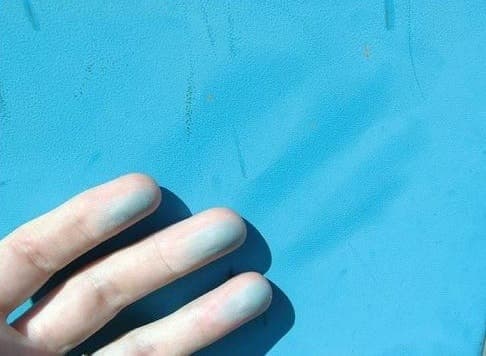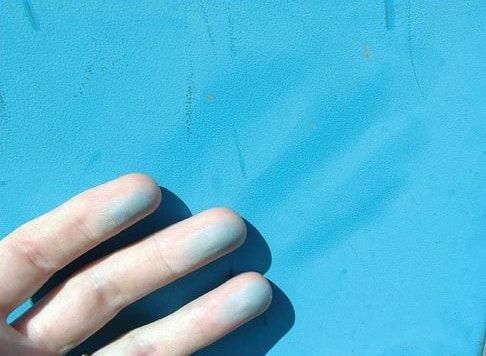
Painting your home’s exterior and interior always adds value to your house. New paint can change the mood of a space and gives the feeling of newness and freshness to your house. However, after some time, several paint defects like cracking, patchiness, blistering, etc. may arise due to chemical attacks, effects of atmosphere, sunlight, humidity and dust or individually or jointly deteriorating it. Among them, chalking paint is the most common defect observed after the painting on the exterior and interior surface of your house.

As the name suggest ‘chalking’ is a formation of a white, chalky powder on the surface of the paint film during weathering, which can cause colour fading. Over time, almost all the paint will have this defect if subjected to outdoor exposure. Chalking paint mainly occurs due to insufficient oil in primer. Hence, you need to take certain precautions and find a useful solution to remove chalking paint defect.
Precautions to Prevent Chalking Paint Defect on Painted Surface
- The surface must be properly cleaned before applying a coat.
- Always refer information sheet and comply it strictly or applying the technique mentioned therein.
- Mix the paint properly while colouring pigment is added.
- Use weather-resistant paint for areas exposed to weather or UV light.
- Make sure that the paint is not contaminated with foreign materials.
- Remove any unstable paint films.
- Don’t use an interior paint for an outdoor
Solution to Remove Chalking Paint Defect
01. Determine the degree of chalking by rubbing the surface with a finger or dark cloth.
02. Remove chalking paint defect residues by one of these following methods:
- Remove chalk by washing or power washing the surface with an appropriate cleaner. If a proper cleaner is not available, rub the surface with a stiff brush and detergent. Thoroughly wash with a high pressure of water.
- Light to moderately chalked surfaces may require wire brushing or sanding to remove the excess surface powder. Then wash the surface with high pressure of water.
03. Allow the surface to dry thoroughly.
04. Check the surface again using your finger or cloth to determine the amount of chalk residue;
- If little or no chalk remains and the old paints are in good condition, priming is not necessary.
- If light to moderate chalk remains, use a powerful additiveto the first coat of water-based paint so that the paint film bonds to the chalked surface.
05. If chalk still remains noticeable, use latex primer as the first coat of paint. Repaint the surface with the good quality paint.
Therefore, always follow good painting techniques so that this type of paint defect does not occur. Understanding fully the causes of chalking paint will prepare you enough for the painting process and will make the paint job easier for you.
Also Read:
Precautions and Possible Solution to Avoid Paint Bleeding Defect
A Simple Guide to Select the Right Paint Sheen for Your Home
Brush Marks Defect: Common Defect in Paint
7 Reasons for Paint Failure on Interior Surfaces
































